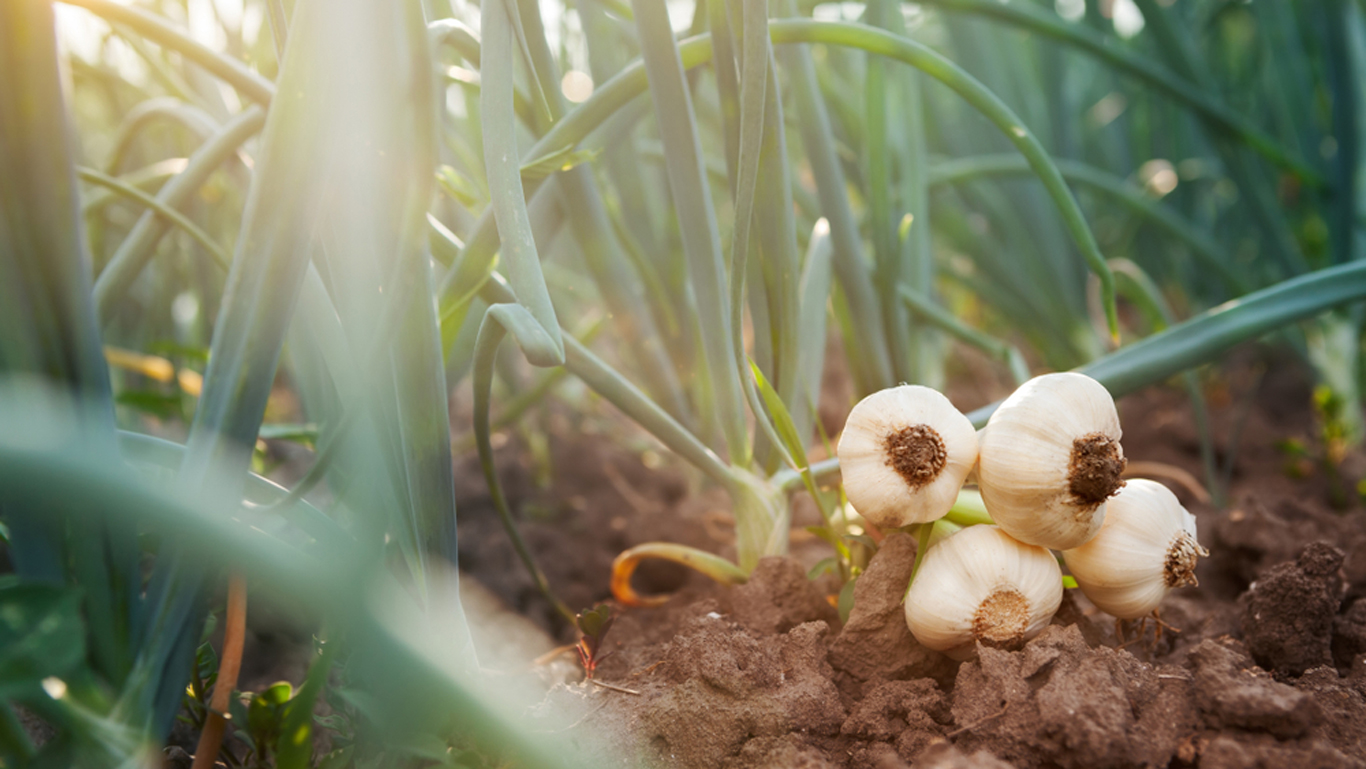
Garlic bulbs, like tulips, are planted before the first hard frost in the fall. With the coming of spring, shoots emerge from the ground while the tasty pungent bulb develops beneath the soil until it is ready for harvest in early summer. Canadian farmers planted a record high 950 hectares of garlic in 2023, an area almost three times larger than the Toronto Islands.
Marketed garlic production and sales dip from the record highs of a year earlier
Despite the increase in planted area, fresh garlic marketed production was down 1.7% from the record high a year earlier to 1 918 tonnes in 2023. Nevertheless, this was 80.4% higher compared with a decade earlier.
Canadian farmers received $22.9 million for their garlic in 2023, down 0.9% from the record high in 2022, but over double what they received a decade earlier ($11.1 million).
Most of Canada’s garlic is grown in Ontario and Quebec
Garlic is grown and sold in every province in Canada. Ontario ($9.9 million) and Quebec ($8 million) farmers sold the most garlic in 2023. Garlic farm gate sales in British Columbia were a distant third, at $3.5 million.
While marketed production of garlic trended upwards in Ontario and Quebec from 2014 to 2023, it fell by almost half in British Columbia (-46.1%).
The good and bad (breath) of garlic
Garlic is more readily available on store shelves today compared with yesteryear, judging by our food availability release, which tracks the amount of food physically present in a country for consumption.
Just over half a kilogram (0.54 kg) of fresh garlic per person was available for consumption in Canada in 2022, the most recent year for which data are available. This was 50.0% higher compared with the beginning of the millennium, when 0.36 kg were available per person.
While tasty, the smell of garlic may remain with you long after you have eaten it.
Brushing your teeth, chewing gum or a sugar candy can help combat the aftereffects of eating garlic.
In 2021, Canadian households spent $74 on oral hygiene products, up from $61 in 2019, prior to the pandemic.
Conversely, household spending on sugar candy (-9.1% to $50) and gum (-21.1% to $15) were both down.

StatsCAN app
Download the StatsCAN app today to have these articles at your fingertips! Already using the app? Leave a review in the Apple App Store and Google Play and let us know what you think.
Contact information
For more information, contact the Statistical Information Service (toll-free 1-800-263-1136; 514-283-8300; infostats@statcan.gc.ca) or Media Relations (statcan.mediahotline-ligneinfomedias.statcan@statcan.gc.ca).
